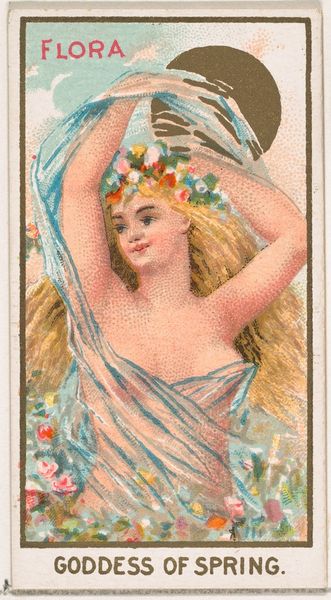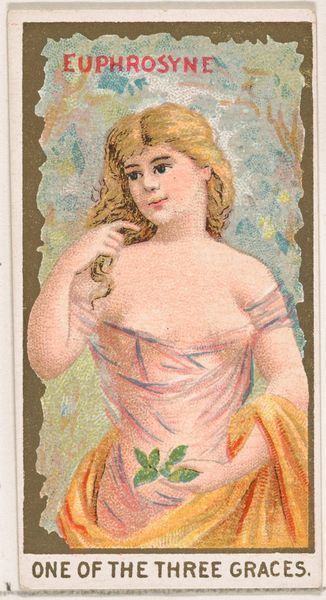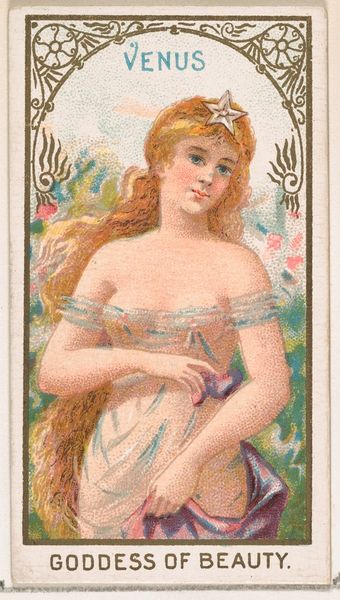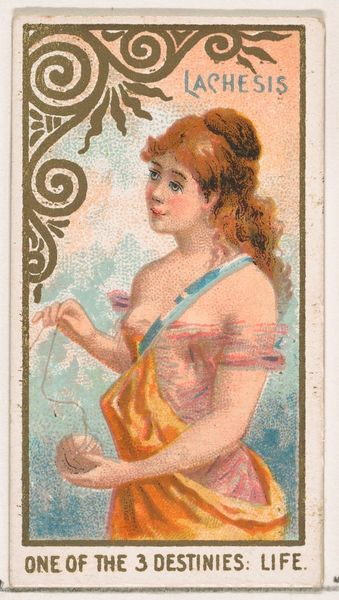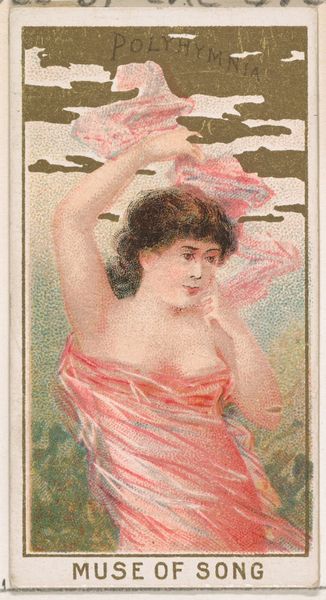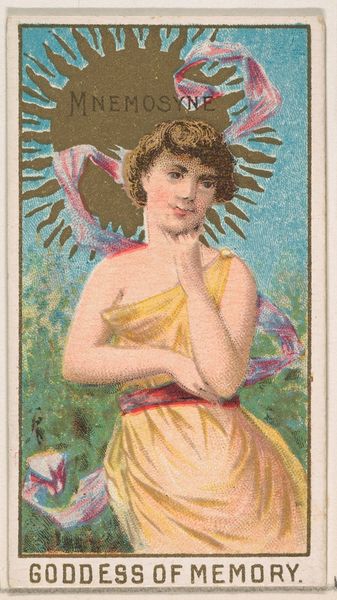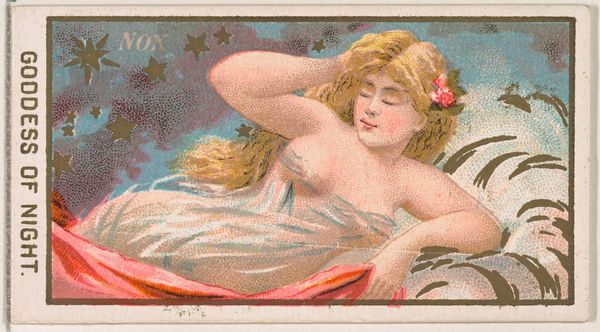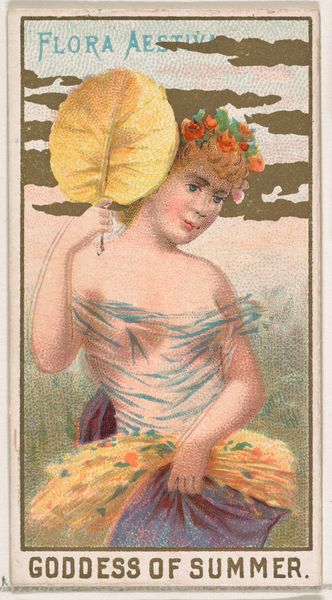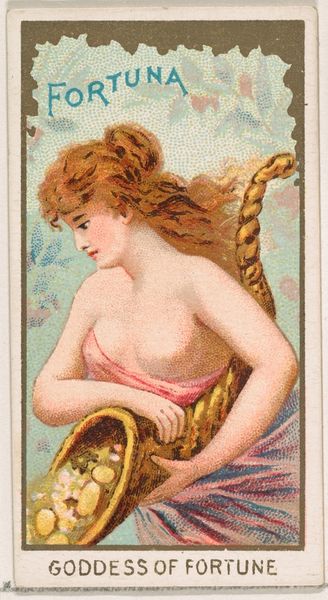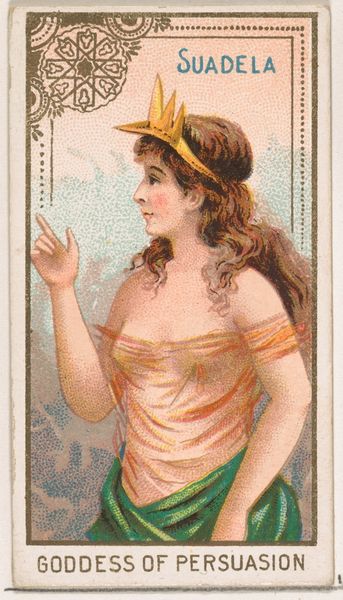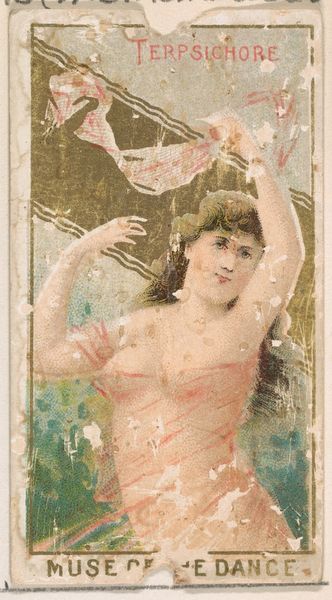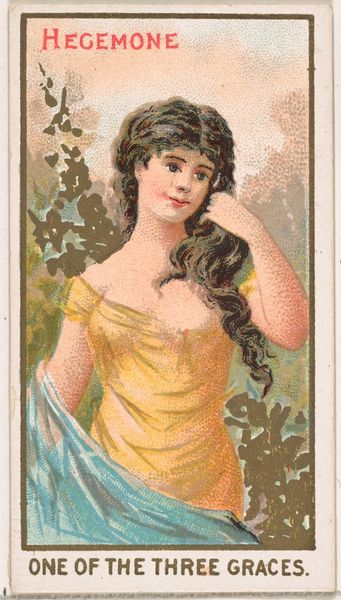
Amphitrite, Goddess of the Sea, from the Goddesses of the Greeks and Romans series (N188) issued by Wm. S. Kimball & Co. 1889
0:00
0:00
drawing, print, etching
#
portrait
#
drawing
# print
#
etching
#
symbolism
#
watercolour illustration
#
history-painting
#
nude
#
portrait art
#
watercolor
Dimensions: Sheet: 2 3/4 × 1 1/2 in. (7 × 3.8 cm)
Copyright: Public Domain
Curator: Oh, I just adore this print! The delicacy of the etching really captures a sense of feminine power and fluidity. This is "Amphitrite, Goddess of the Sea" from the Goddesses of the Greeks and Romans series, created around 1889 by Wm. S. Kimball & Co. It's one of those images that feels both timeless and of its time. Editor: It feels saccharine, though, doesn't it? This depiction of Amphitrite comes across more like an idealized vision of white womanhood than anything genuinely reflective of a powerful sea goddess. The soft watercolor palette and that coy, sideways glance feel distinctly… performative. Curator: Hmm, I see what you mean. It's not exactly a gritty portrayal of oceanic dominion. But I think that's part of the charm. There’s a kind of dreamy innocence here, a gentler power than, say, Poseidon's raging storms. She’s emerging from the water, arranging roses in her hair - it’s intimate. Editor: But whose intimacy are we really witnessing here? Consider the context – this image circulated as a collectible card during a period of intense social and political upheaval, particularly around gender roles. The “ideal” woman, often white and upper-class, was held up as a symbol of purity and domesticity. This image reinforces those norms, even within the guise of mythology. Curator: I think it is more of just an ethereal imagining that gives off beauty and fluidity which feels relaxing. You know sometimes people don't need all the weight behind their paintings... Sometimes floating is just as beneficial, you know? Like floating in the ocean, very much how Amphitrite does on a day-to-day basis, I suppose. Editor: Sure, "floating" can be beneficial. But let's be mindful of whose bodies are allowed to float freely and whose are weighed down by systemic oppression. It's easy to get lost in the supposed innocence of art, but these images are rarely neutral. They actively participate in shaping and reinforcing power structures. Curator: Fair enough. I suppose even goddesses aren't immune to being packaged and commodified. But maybe, just maybe, Amphitrite here is winking at us from across the ages, subverting those expectations with a knowing smile. Or maybe I am just being optimistic, but isn't that how we all want to think about are, is optimistically? Editor: Perhaps. Or perhaps our role is to continually question the narratives presented to us, to acknowledge the complex and often problematic history embedded within even the seemingly simplest of images. Curator: Always questioning, you're such an inspiration to my work ethic, always thinking about things even from centuries ago. It definitely makes me think even harder than I originally thought of what art may inspire to our own societies to this day.
Comments
No comments
Be the first to comment and join the conversation on the ultimate creative platform.
